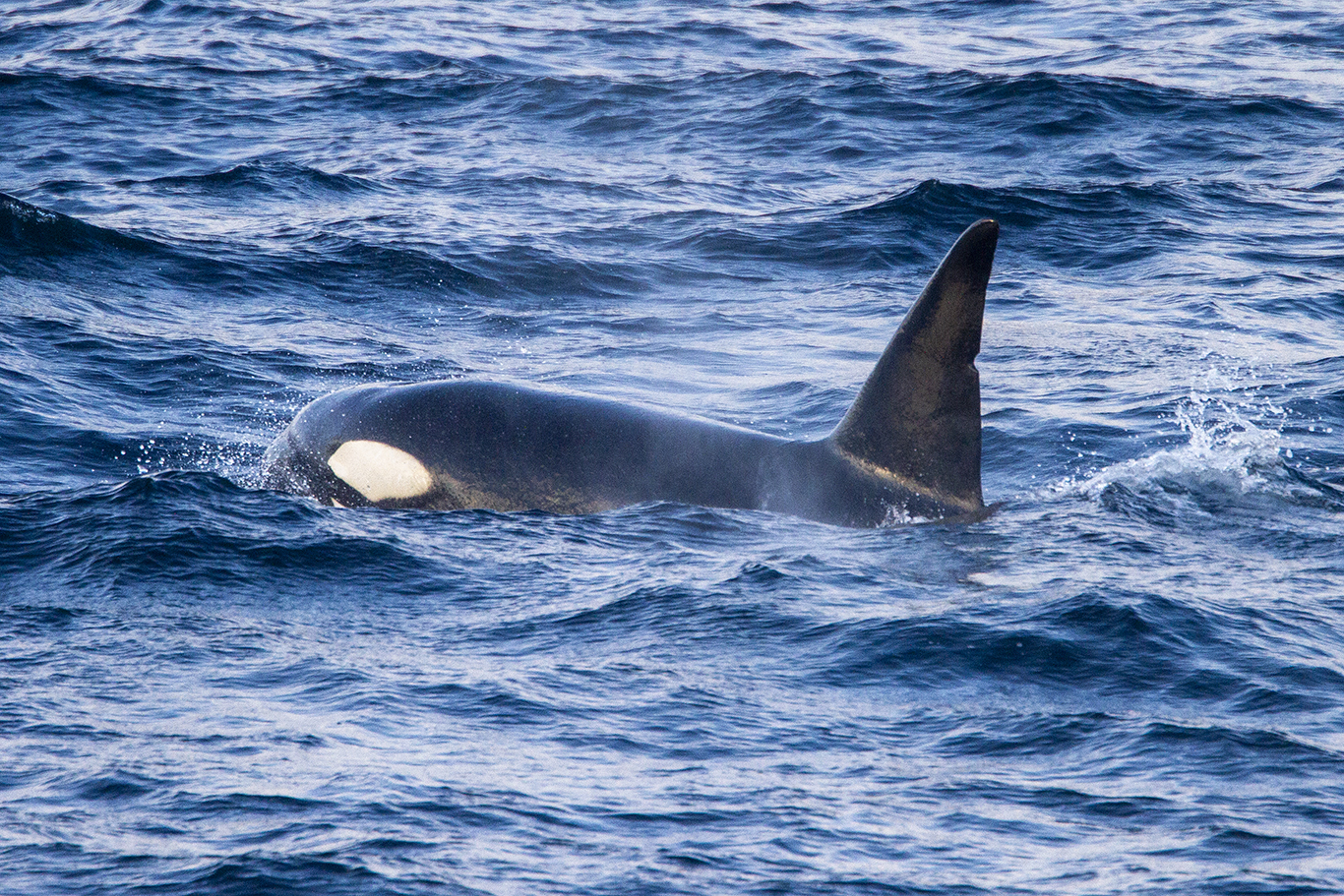|
| Distribution |
Despite being a regular component of the cetacean fauna along the East Coast of the US, this species is rarely encountered in NC waters.
Killer Whales have the widest distrubtion of any cetacean species and are found in all the world's oceans, from the Arctic to Antarctica. |
| Abundance |
Killer Whales can be locally common in numerous areas throughout their range, such as in the waters off Norway, Alaska, the Pacific Northwest, and Antarctica. For the Western North Atlantic, the latest stock assessments by NOAA, based on line-transect surveys, give a population total of 267 animals for the northern Gulf of Mexico (2020) while a 2014 dataset lists the total population size for the East Coast of the US, including NC waters, as unknown due to insufficient data. |
| Seasonal Occurrence |
Killer Whales can occur at any time of year in North Carolina waters. Hairr (2012) summarized 10 sightings in NC waters between 1934-2011. Three sightings occurred in March, two occurred in April, three in May, and two in September, including the only known stranding of the species in the state, an adult male that came ashore alive in Kill Devil Hills on Sept. 19, 1974. Since that publication, Pusser documented a group of 4 in March 2014, another group seen by sportfishermen occurred in February 2019, and a Clearwater aerial survey team looking for North Atlantic Right Whales, documented a single animal in March 2025. |
| Habitat |
Barry and al. (2024) found that Killer Whales in the Gulf of Mexico and off the Southeastern United States, including NC, primarily occur in oceanic waters greater than 200 meters depth. |
| Behavior |
In the Southeast, Killer Whales typically occur in small groups of less than 10 animals. The largest group seen in NC waters was estimated at 12-15 animals. In the Gulf of Mexico, Killer Whales have been observed feeding or attacking Dwarf Sperm Whales, Pantropical Spotted Dolphins, and Sperm Whales. In NC waters, Killer Whales have been observed eating Bluefin Tuna on two different occasions. |
| Comments |
Killer Whales off North Carolina are not known to match any particular ecotype, such as residents and transients in the Pacific Northwest. According to Katona (1988) David Lee, a former curator at the North Carolina Museum of Natural Sciences, documented an adult male off Cape Hatteras with a distinctive notch in its dorsal fin. Interestingly, Pusser documented an adult male in March 2014 with a distinctive notch in its fin. Efforts to determine if it was the same whale have been unsuccessful. |
| Origin |
Native |
| NC List |
Official |
 State Rank State Rank |
S1M |
| State Status |
|
 Global Rank Global Rank |
G4G5 |
| Federal Status |
E |
| subspecies |
|
| other_comName |
Orca |
| synonym |
|



